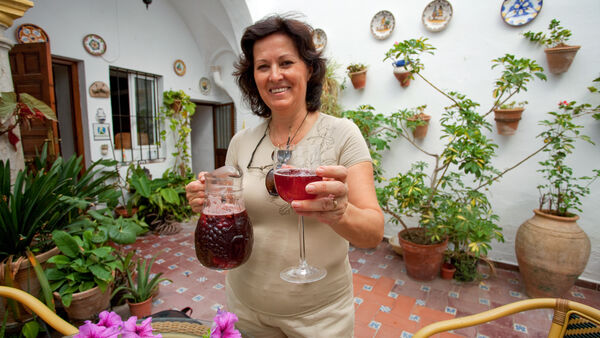Sangria: Bloody Good Spanish Punch
By Dave Fox
On warm Spanish nights, bars are filled with revelers who wash down appetizer-sized portions called tapas with pitchers of fruity sangria.
Sangria is a thirst-quenching summer beverage. Bright red in color, it takes its name from the Spanish word sangre, which means "blood." The key ingredients are red wine and fruit. It's often spiked with something stronger to give it a kick. Brandy, gin, and vodka are common additives, though you can use whatever you want or happen to have within arm's reach.
Each bar or restaurant has its own flexible recipe. Sangria's fruitiness can make it taste deceptively harmless until your head starts to spin. Pace yourself carefully until you've determined how much of a punch it packs.
If you're making sangria at home, there's no right or wrong way to do it. Part of its beauty is you can make it as potent or tame as you like. You can even make nonalcoholic sangria, substituting fruit juice and soda water for the wine.
To make the alcoholic kind, begin with a bottle of red wine. A full-bodied Spanish red such as a rioja is best. You can use whatever fruits you like. Apples, pears, peaches, grapes, and berries are all popular. (Cut large fruits like apples and pears into small chunks. Be sure smaller fruits like grapes and cherries are seedless.) Citrus fruits such as oranges and lemons are particularly good because the acidity tempers the sweetness. Add soda water — and a few splashes of hard liquor if you like. Sweeten it with sugar and chill it with ice.
Sangria experts say the pitcher should sit for several hours before you drink it so the fruit soaks up the alcohol. Whether you're in Toledo, Spain, or Toledo, Ohio, on a hot summer day, sangria is a refreshing beverage that takes the edge off the summer heat.
¡Salud!
Former Rick Steves tour guide Dave Fox now runs Globejotting.


